Fall Prevention 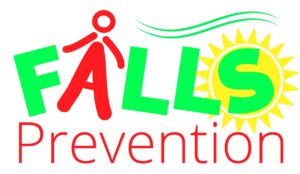
1 in 3 adults over the age of 65 have a fall every year. Those who do fall have a 20 to 30% chance of suffering a broken bone or head injury, making falls a major public health issue. Beside the possible financial cost, hospital stays, and therapy needs, a fear of falling can begin to cause you to limit your involvement in daily activities and make fall prevention more critical.
What Makes You More Likely To Fall?
- Medications – Antidepressants, sedatives, tranquilizers, and some over-the-counter medications can impact your balance. Talk with your doctor and understand your risks.


- Muscle Weakness – Having lower body and sometimes upper body weakness makes it harder to compensate to balance challenges like walking over uneven surfaces or people/objects bumping into you.
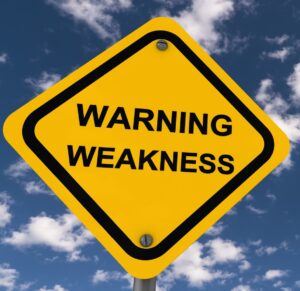
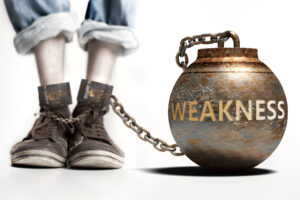
- Vision Problems – Difficulties seeing distance/obstacles/in low light, can cause to you to miss tripping hazards.
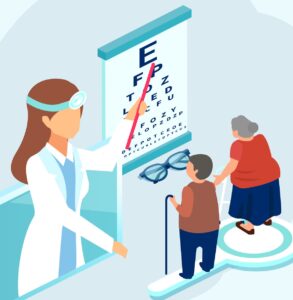
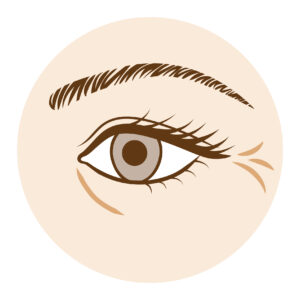
- Balance & Walking Deficits – You need a cane, walker, etc. and/or are having trouble staying steady on your feet.
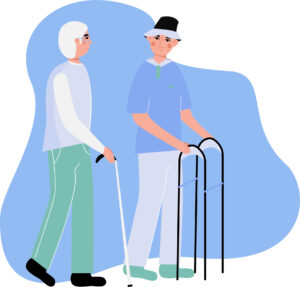
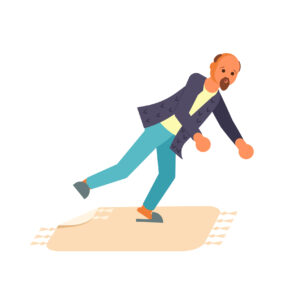
- Tripping Hazards – Clutter, throw rugs, potholes, uneven surfaces (lawns, fields, etc.)
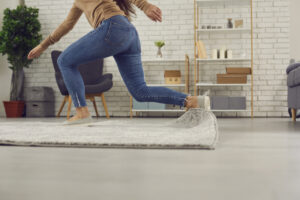
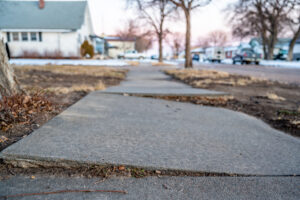
- Feet – No shoes, poorly fitting or minimally supportive shoes, and/or pain in your feet.
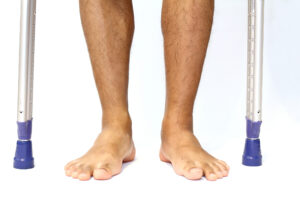
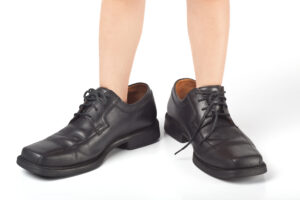
- Prior Fall or “Near Miss” – If you had a fall or find yourself loosing your balance and needing to catch yourself to prevent a fall.
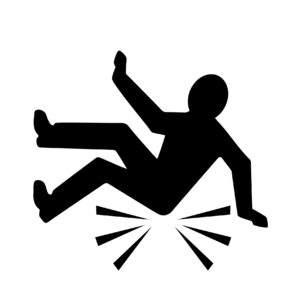

- Confusion – Being even temporarily disoriented or challenged with problem solving.
Fall Prevention Plan:
- Talk to your health provider (Dr., Nurse, Pharmacist) about your medications, read the labels & follow the precautions, take the medication when they tell you to, report your side effects.
- Being active & exercising helps you respond better to balance challenges and reduce bone loss from osteoporosis.
- Eye and hearing support helps you see & hear the hazards that are coming your way. Wear glasses/hearing aids that fit you and are the correct level to your needs.
- Alcohol and other recreational drugs can affect your balance and reflexes.
- Sit up from lying and stand up from sitting slowly to allow your blood pressure to adjust & avoid getting off balance.
- Use the assistive device (cane, walker, crutches) that was recommended, in the way you were taught. A cane in the wrong hand or walking with one hand on a rolling walker will not help if you are off balance.
- Holding onto the walls and/or furniture to get around, talk to your doctor/therapist about a device for more support.
- Wear closed, non-skid, low heeled shoes that fully support your feet and fit well. Avoid walking in socks, slippers, high heels, and smooth soled shoes.
- Talk to your health care providers about any falls, write down the circumstances to prevent falls in the future.
- Carry a phone and/or alerting device so others can help you in the event of a fall.
- Remove/fix items that could cause you to trip and are in the way.
- Use grab bars and railings for extra support in the bathroom, stairs, and elevations.
If You Fall:
- Stay still and take some deep breaths to calm yourself.
- Decide if you are hurt and/or if moving will cause something else to happen and make it worse.
- Call for help and/or 911.
- If you decide to move, sit up slowly to adjust your blood pressure.
- Move to your hands and knees while always checking how you feel.
- Use a chair or sturdy object to move yourself into sitting.
